Fuel Hose/Pipes Replacement - Chassis Pickup
Removal Procedure
Important: Clean the fuel and evaporative emission (EVAP) connections and surrounding areas prior to disconnecting the lines in order to avoid possible system contamination.
- Relieve the fuel system pressure. Refer to Fuel Pressure Relief .
- Disconnect the fuel feed line (1) at the engine. Refer to Metal Collar Quick Connect Fitting Service .
- Disconnect the EVAP canister purge tube line (2). Refer to Plastic Collar Quick Connect Fitting Service .
- Cap the fuel rail and EVAP lines in order to avoid possible system contamination.
- If equipped with a manual transmission, raise and suitably support the vehicle. Refer to Lifting and Jacking the Vehicle .
- If equipped with an automatic transmission, remove the transmission. Refer to Transmission Replacement .
- Remove the fuel pipe bracket nut.
- Remove the fuel pipe bracket from the bellhousing stud.
- Remove the heated oxygen sensor (HO2S) sensor connector from the bracket.
- Remove the fuel line clip from the bracket on the transmission.
- If equipped with 4-wheel drive (4WD), remove the fuel line clip from the bracket on the transfer case.
- Remove the clip from the bracket on the frame.
- Remove the transfer case harness from the clip bracket.
- Thoroughly wash all contaminants from around the EHCU.
- Disconnect the chassis electrical harness connectors from the electronic brake control module (EBCM).
- Disconnect the brake lines from the brake pressure modulator valve (BPMV).
- Remove the bolts (4) attaching the EHCU bracket to the frame (5).
- Remove the EHCU (1).
- If equipped with 4WD, remove the torsion bar bracket. Refer to Torsion Bar Replacement .
- Disconnect the fuel and EVAP lines at the fuel tank. Refer to Plastic Collar Quick Connect Fitting Service .
- Cap the fuel and EVAP lines at the fuel tank in order to avoid possible system contamination.
- Remove the fuel and EVAP bundle clip nuts.
- Remove the fuel and EVAP bundle.
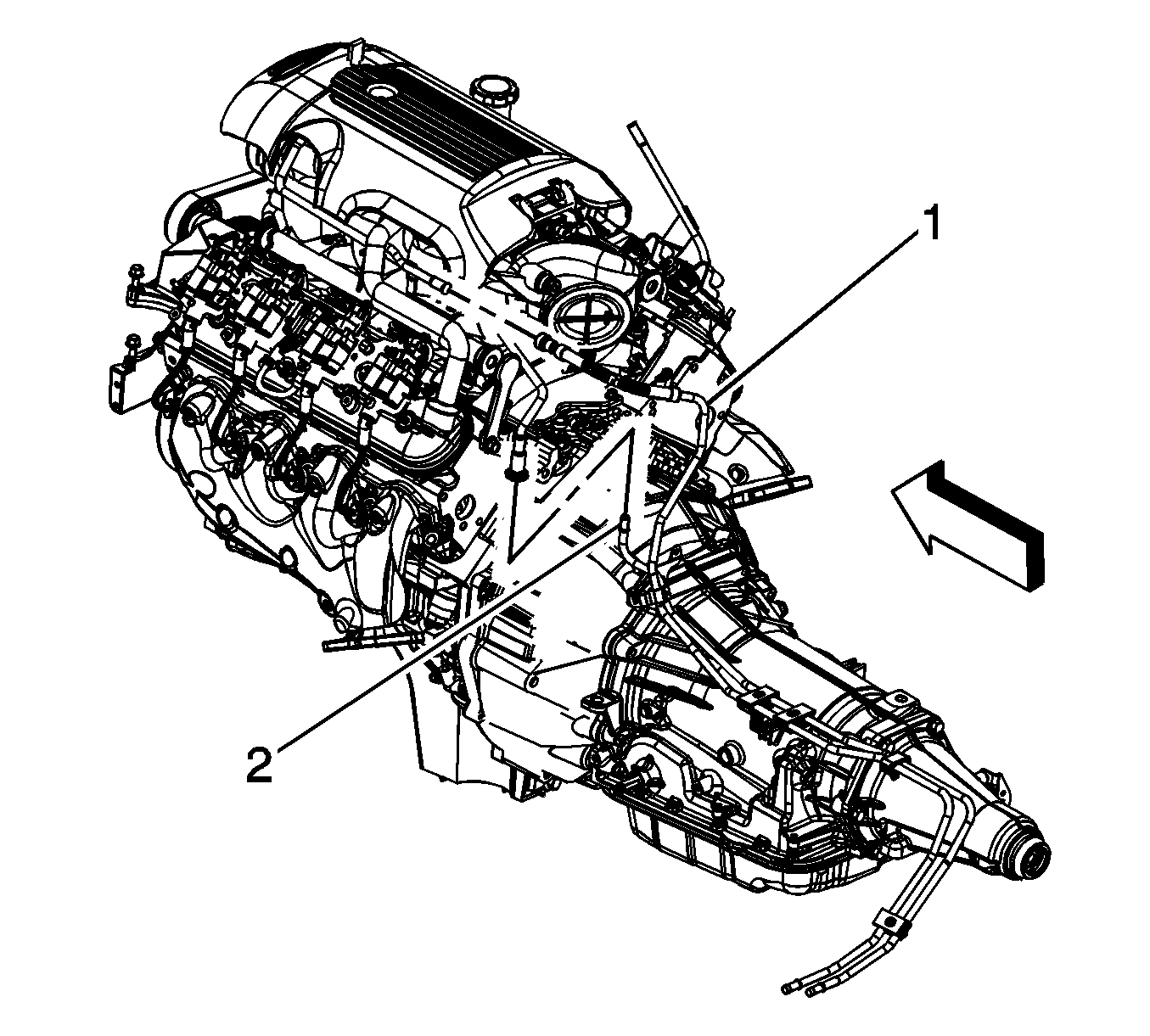
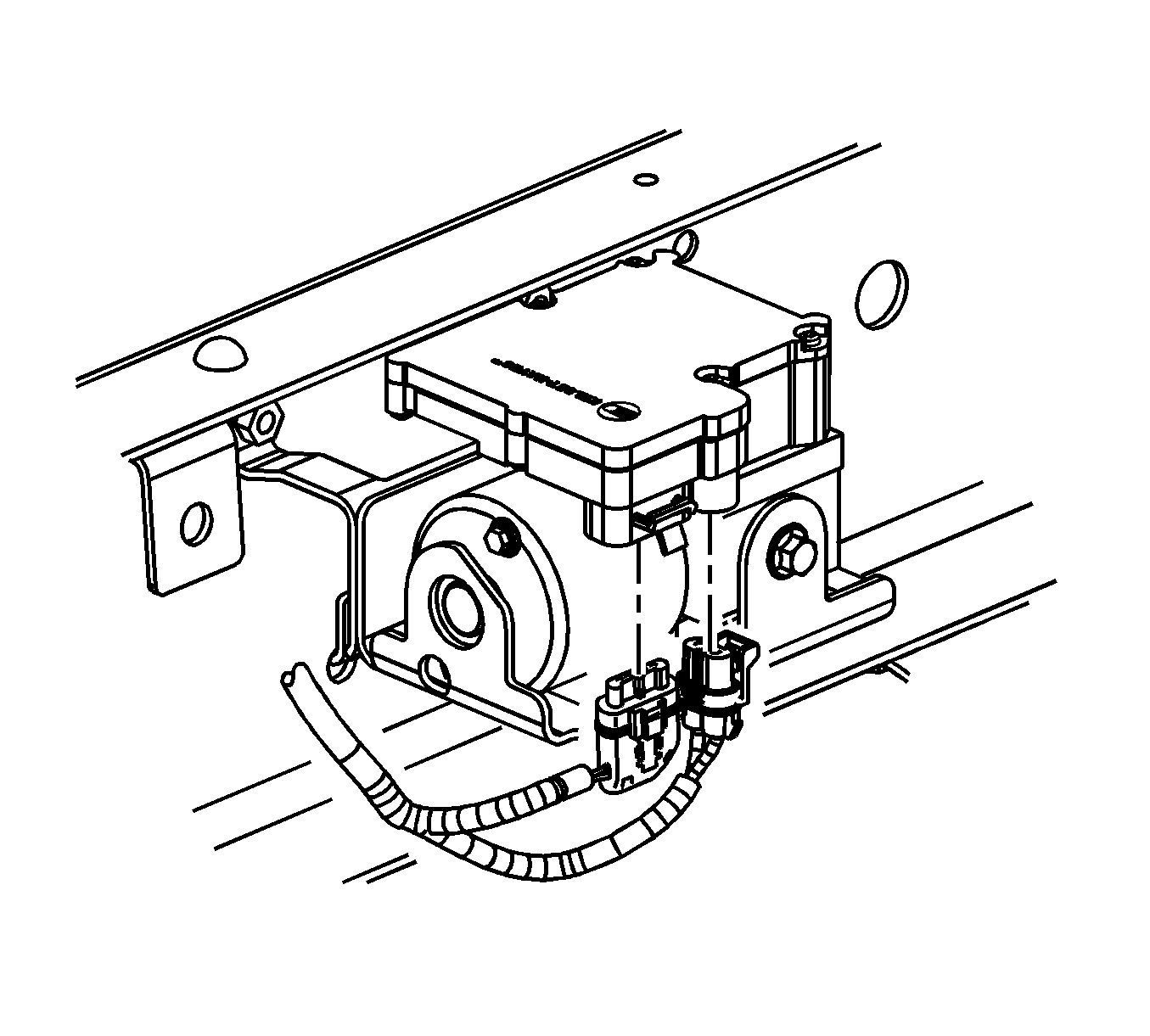
Important: The area around the electro-hydraulic control unit (EHCU) MUST be free from loose dirt to prevent contamination of disassembled antilock brake (ABS) components.
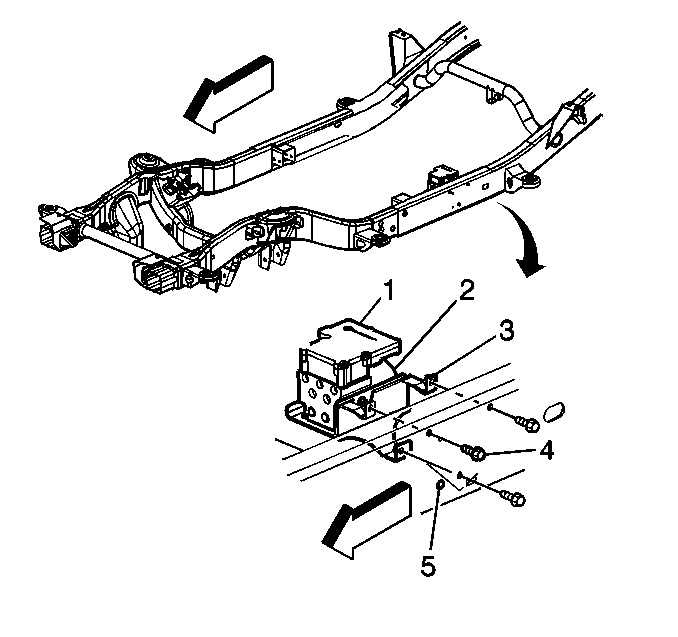
Important: Make sure the brake lines are tagged and kept in order for proper reassembly.
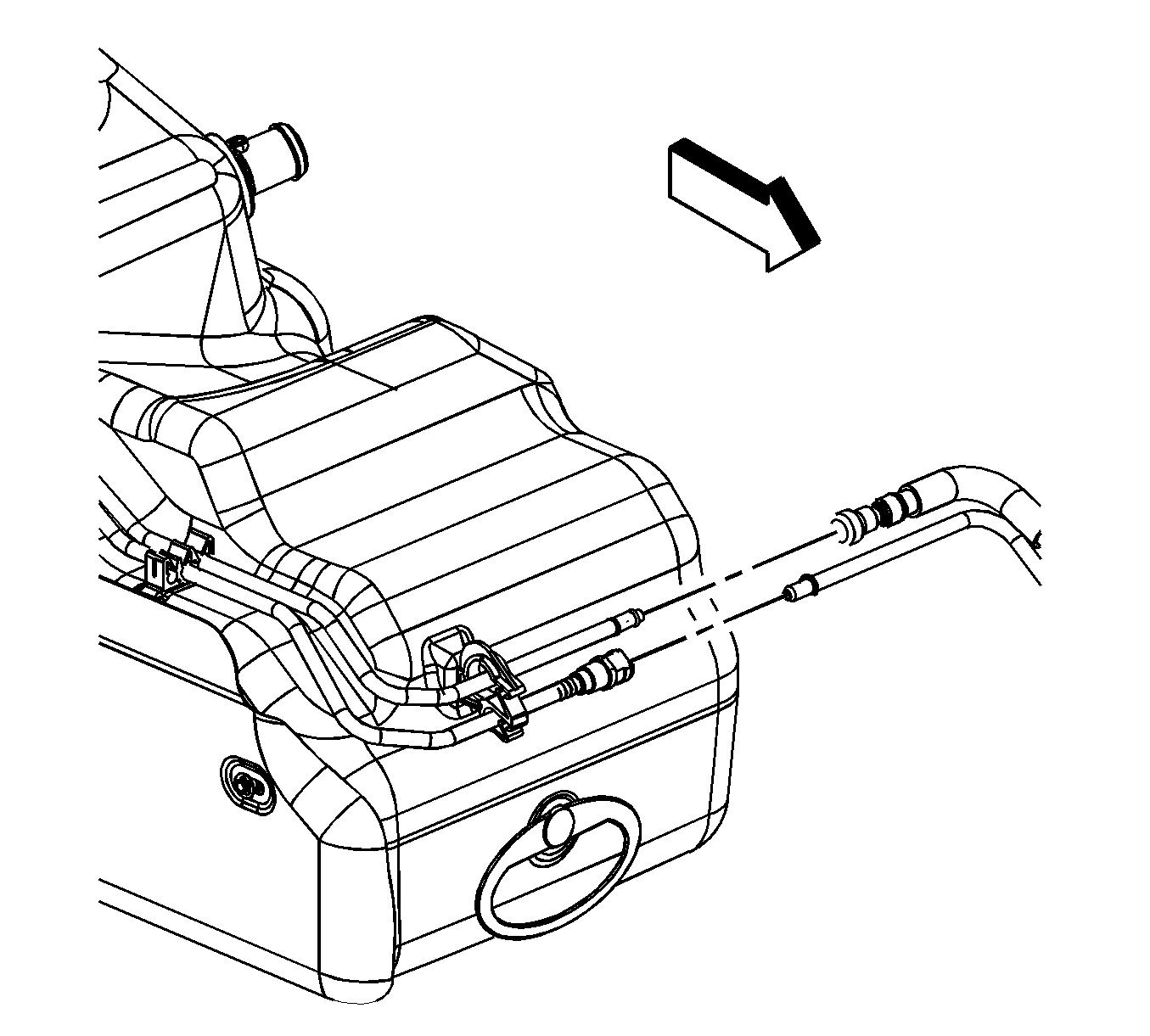

Installation Procedure
- Install the fuel and EVAP bundle.
- Install the fuel and EVAP bundle clip nuts.
- Remove the caps from the fuel and EVAP lines at the fuel tank.
- Connect the fuel and EVAP quick connect fittings. Refer to Plastic Collar Quick Connect Fitting Service .
- If equipped with 4WD, install the torsion bar bracket. Refer to Torsion Bar Replacement .
- Install the EHCU (1).
- Install the bolts (4) attaching the EHCU bracket to the frame (5).
- Connect the brake lines to the BPMV.
- Connect the chassis electrical harness connectors to the EBCM.
- Install the transfer case harness to the clip bracket.
- Install the clip to the bracket on the frame.
- If removed, install the automatic transmission. Refer to Transmission Replacement .
- If equipped with 4WD, install the fuel line clip to the bracket on the transfer case.
- Install the fuel line clips to the brackets on the transmission.
- Install the HO2S sensor connector to the bracket.
- Install the fuel pipe bracket to the bellhousing stud.
- Install the fuel pipe bracket nut.
- Lower the vehicle.
- Remove the caps from the fuel rail and EVAP line.
- Connect the fuel feed line (1) at the engine. Refer to Metal Collar Quick Connect Fitting Service .
- Connect the EVAP canister purge tube line (2). Refer to Plastic Collar Quick Connect Fitting Service .
- Install the fuel fill cap.
- Connect the negative battery cable. Refer to Battery Negative Cable Disconnection and Connection .
- Use the following procedure in order to inspect for leaks:
Notice: Refer to Fastener Notice in the Preface section.

Tighten
Tighten the nuts to 12 N·m (106 lb in).


Tighten
Tighten the bolts to 25 N·m (18 lb ft).

Tighten
Tighten the fittings to 25 N·m (18 lb ft).
Tighten
Tighten the nut to 10 N·m (89 lb in).

| 24.1. | Turn the ignition ON, with the engine OFF, for 2 seconds. |
| 24.2. | Turn the ignition OFF for 10 seconds. |
| 24.3. | Turn the ignition ON, with the engine OFF. |
| 24.4. | Inspect for fuel leaks. |
Fuel Hose/Pipes Replacement - Chassis Cab/Chassis - Front
Removal Procedure
Important: Clean the fuel and evaporative emission (EVAP) connections and surrounding areas prior to disconnecting the lines in order to avoid possible system contamination.
- Relieve the fuel system pressure. Refer to Fuel Pressure Relief .
- Disconnect the fuel feed line (1) at the engine. Refer to Metal Collar Quick Connect Fitting Service .
- Disconnect the EVAP canister purge tube line (2). Refer to Plastic Collar Quick Connect Fitting Service .
- Cap the fuel rail in order to avoid possible system contamination.
- Raise and suitably support the vehicle. Refer to Lifting and Jacking the Vehicle .
- Remove the fuel pipe bracket nut.
- Remove the fuel pipe bracket from the bellhousing stud.
- Remove the fuel line clips from the brackets on the transmission.
- If equipped with 4-wheel drive (4WD), remove the fuel line clip from the bracket on the transfer case.
- Disconnect the fuel and EVAP quick connect fittings. Refer to Plastic Collar Quick Connect Fitting Service .
- Cap the fuel and EVAP lines at the fuel tank in order to avoid possible system contamination.
- Remove the EVAP line from the clips (2) on the fuel tank.
- Disconnect the quick connect fittings from the EVAP canister.
- Remove the fuel and EVAP bundle nuts.
- Remove the fuel and EVAP bundle.

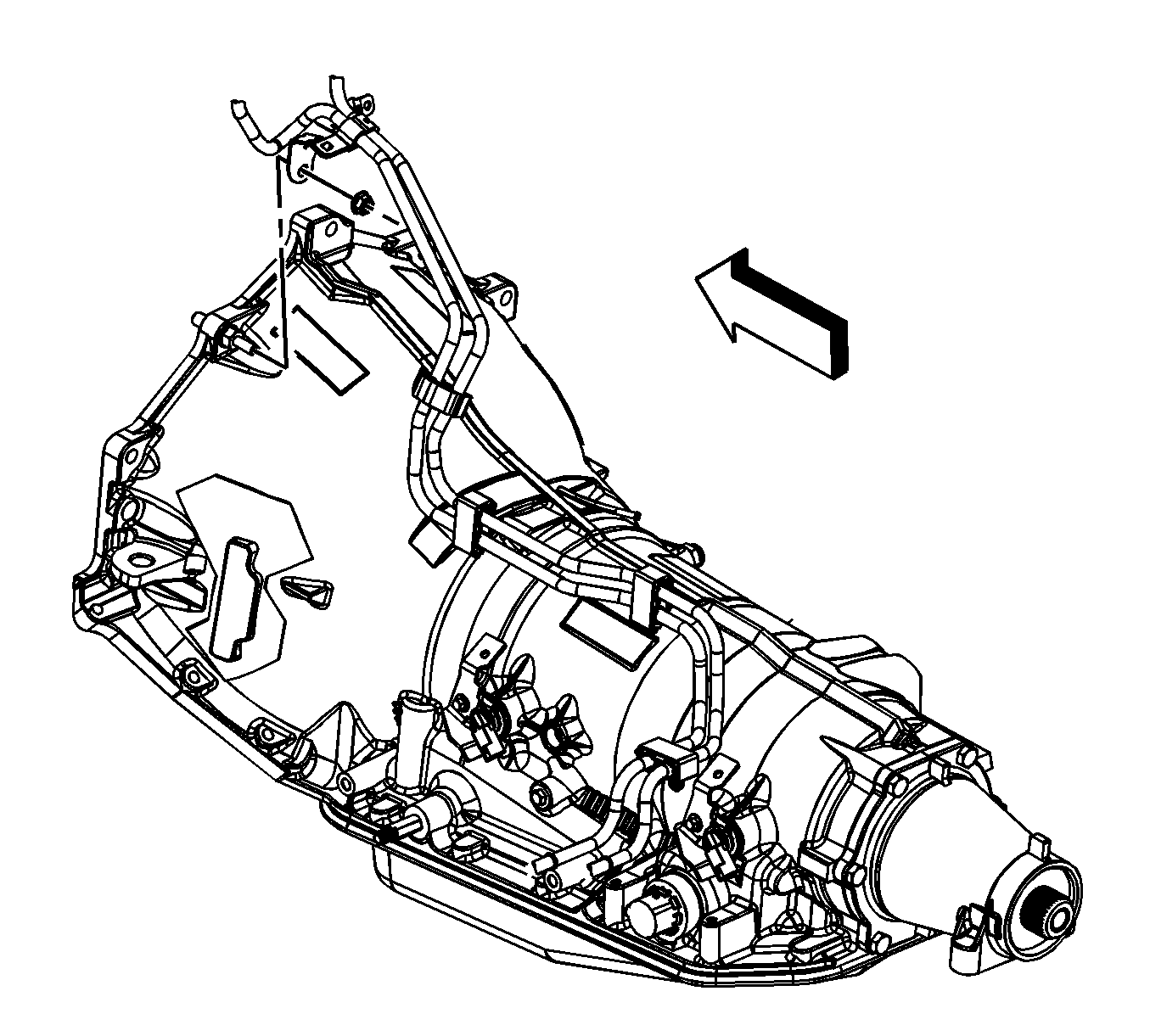
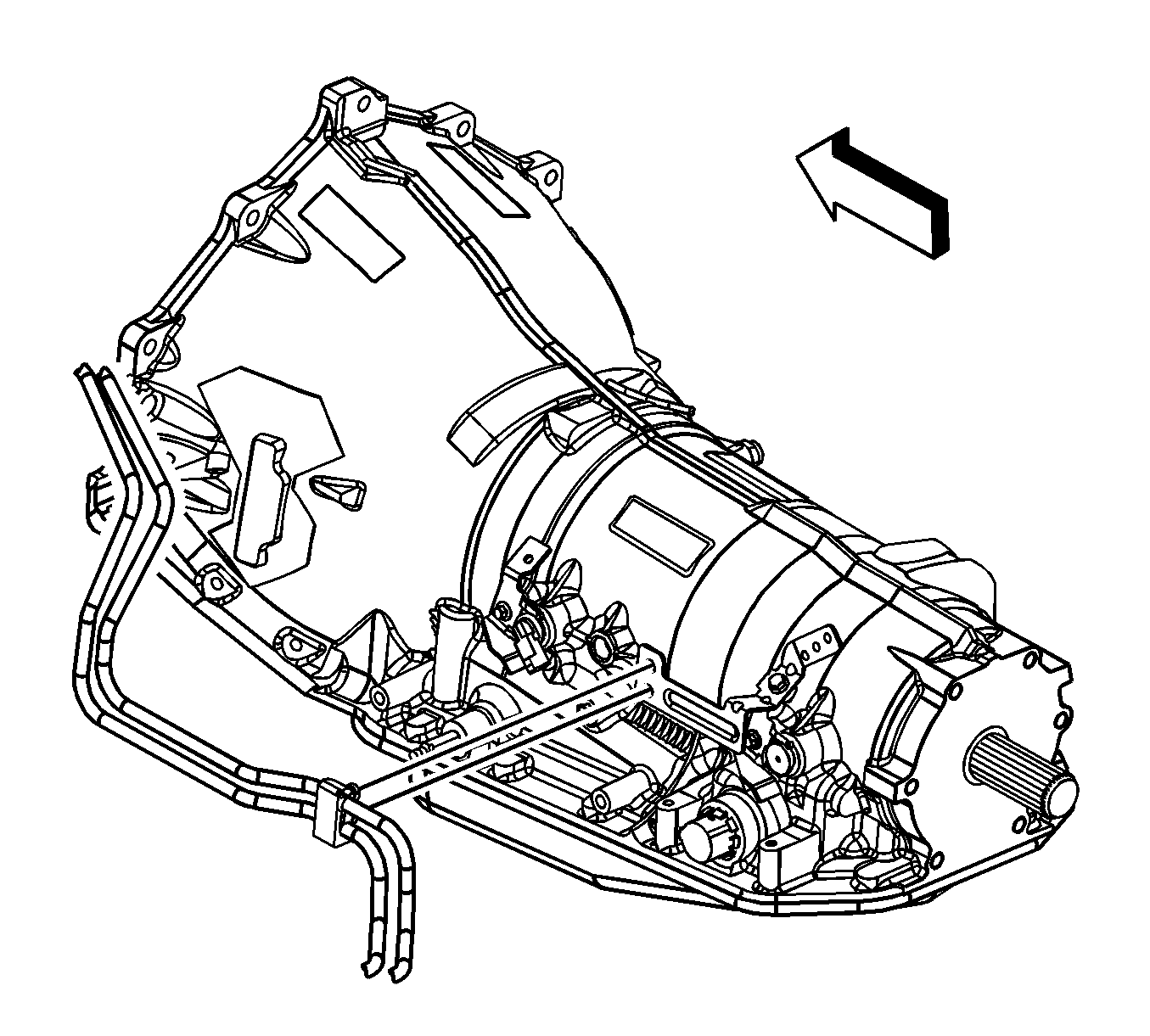

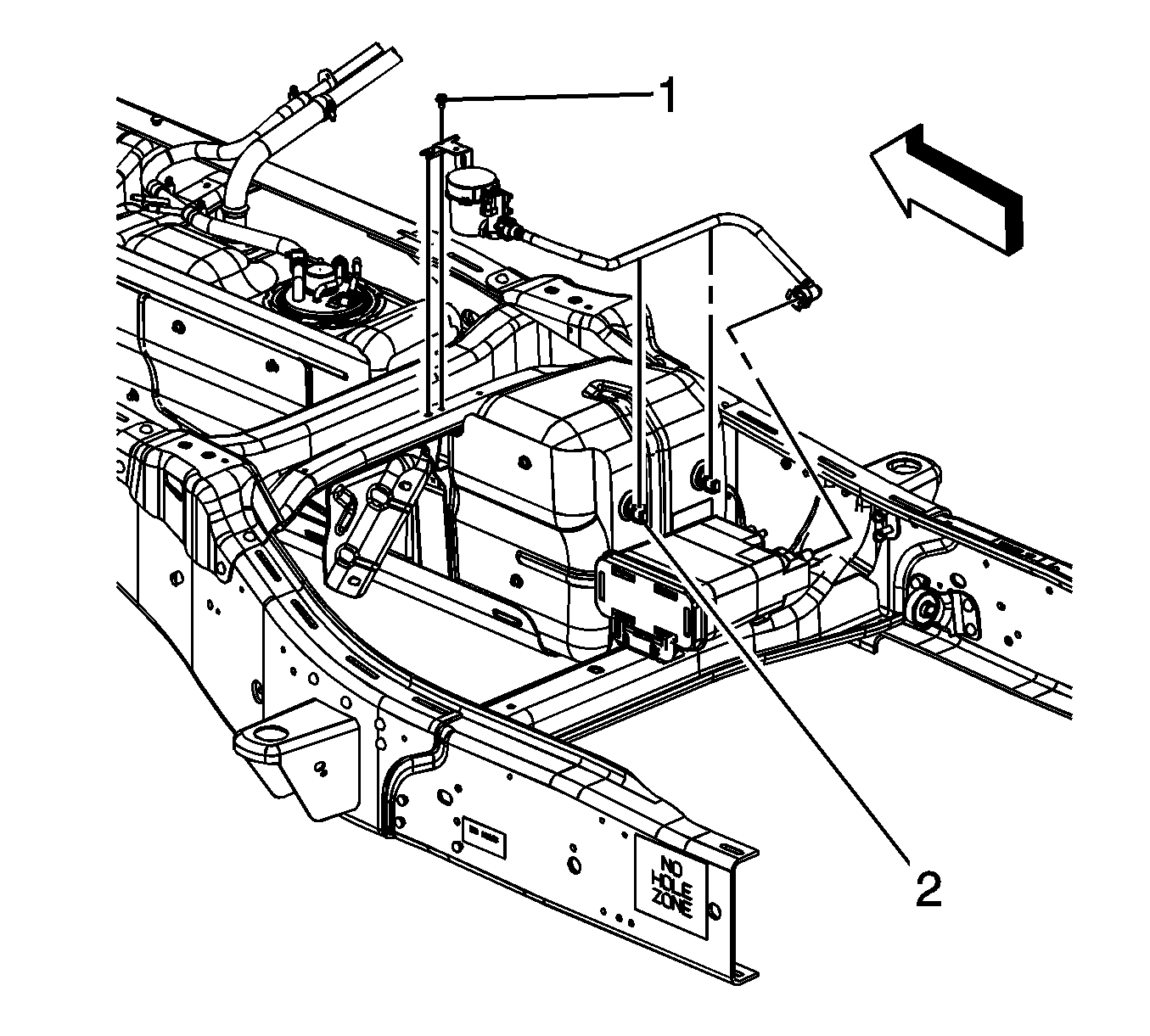
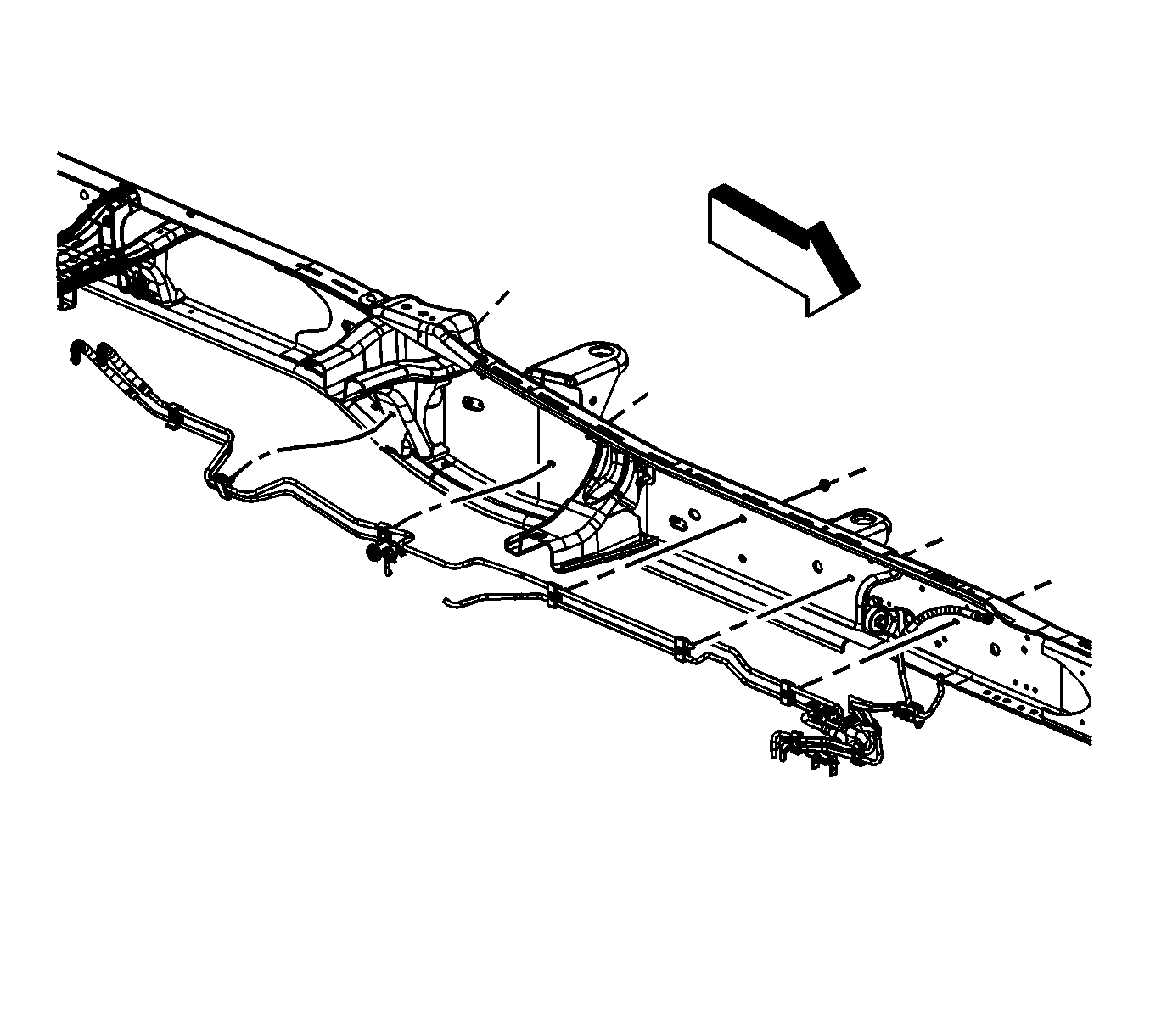
Installation Procedure
- Install the fuel and EVAP bundle.
- Install the fuel and EVAP bundle nuts.
- Connect the quick connect fittings to the EVAP canister.
- Install the EVAP line to the clips (2) on the fuel tank.
- Remove the caps from the fuel and EVAP lines.
- Connect the fuel and EVAP quick connect fittings. Refer to Plastic Collar Quick Connect Fitting Service .
- If equipped with 4WD, install the fuel line clip to the bracket on the transfer case.
- Install the fuel line clips to the brackets on the transmission.
- Install the fuel pipe bracket to the bellhousing stud.
- Install the fuel pipe bracket nut.
- Lower the vehicle.
- Remove the caps from the fuel rail.
- Connect the EVAP canister purge tube line (2). Refer to Plastic Collar Quick Connect Fitting Service .
- Connect the fuel feed line (1) at the engine. Refer to Metal Collar Quick Connect Fitting Service .
- Install the fuel fill cap.
- Connect the negative battery cable. Refer to Battery Negative Cable Disconnection and Connection .
- Perform the following procedure in order to inspect for leaks.
Notice: Refer to Fastener Notice in the Preface section.

Tighten
Tighten the nuts to 12 N·m (106 lb in).




Tighten
Tighten the nut to 10 N·m (89 lb in).

| 17.1. | Turn the ignition ON, with the engine OFF, for 2 seconds. |
| 17.2. | Turn the ignition OFF for 10 seconds. |
| 17.3. | Turn the ignition ON, with the engine OFF. |
| 17.4. | Inspect for fuel leaks. |
Fuel Hose/Pipes Replacement - Chassis Cab/Chassis - Rear
Removal Procedure
Important: Clean the fuel and evaporative emission (EVAP) connections and surrounding areas prior to disconnecting the lines in order to avoid possible system contamination.
- Relieve the fuel system pressure. Refer to Fuel Pressure Relief .
- Disconnect the fuel feed and pressure balance lines from the front tank. Refer to Metal Collar Quick Connect Fitting Service .
- Cap the fuel and balance lines at the fuel tank in order to avoid possible system contamination.
- Disconnect the fuel feed and pressure balance lines from the rear tank. Refer to Metal Collar Quick Connect Fitting Service .
- Cap the fuel and balance lines at the fuel tank in order to avoid possible system contamination.
- Remove the rear fuel line bundle clip nuts.
- Remove the rear fuel line bundle.
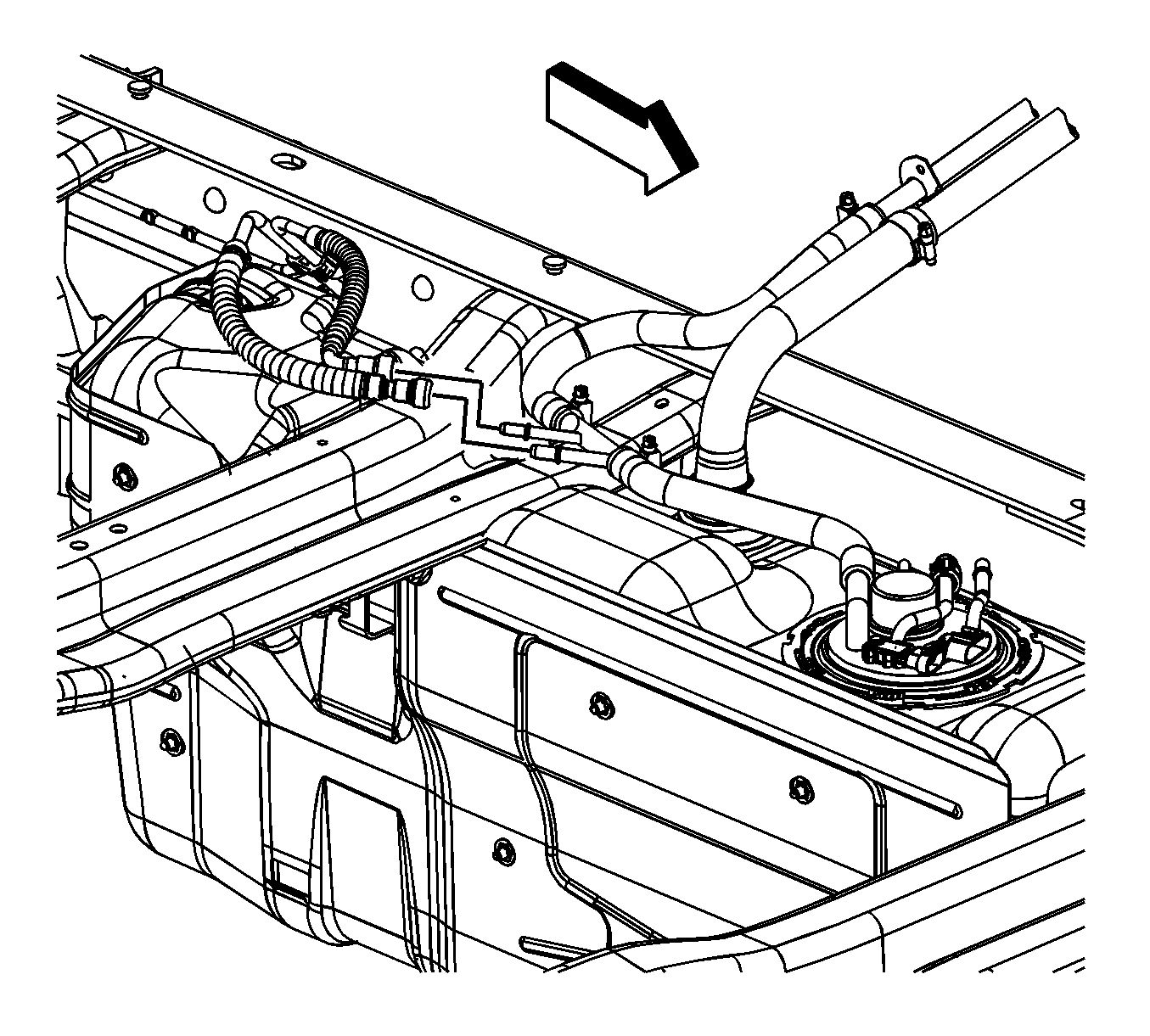
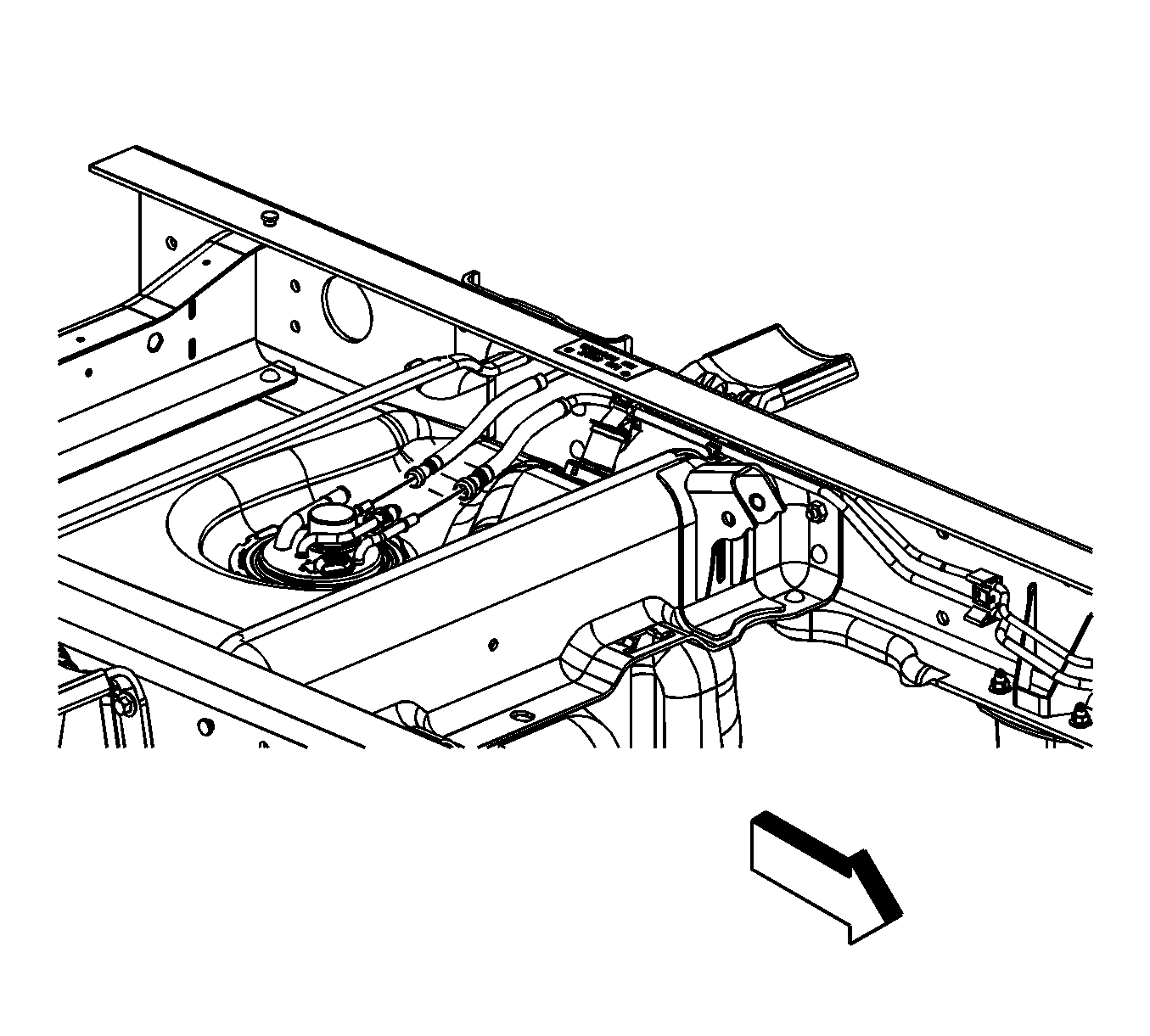
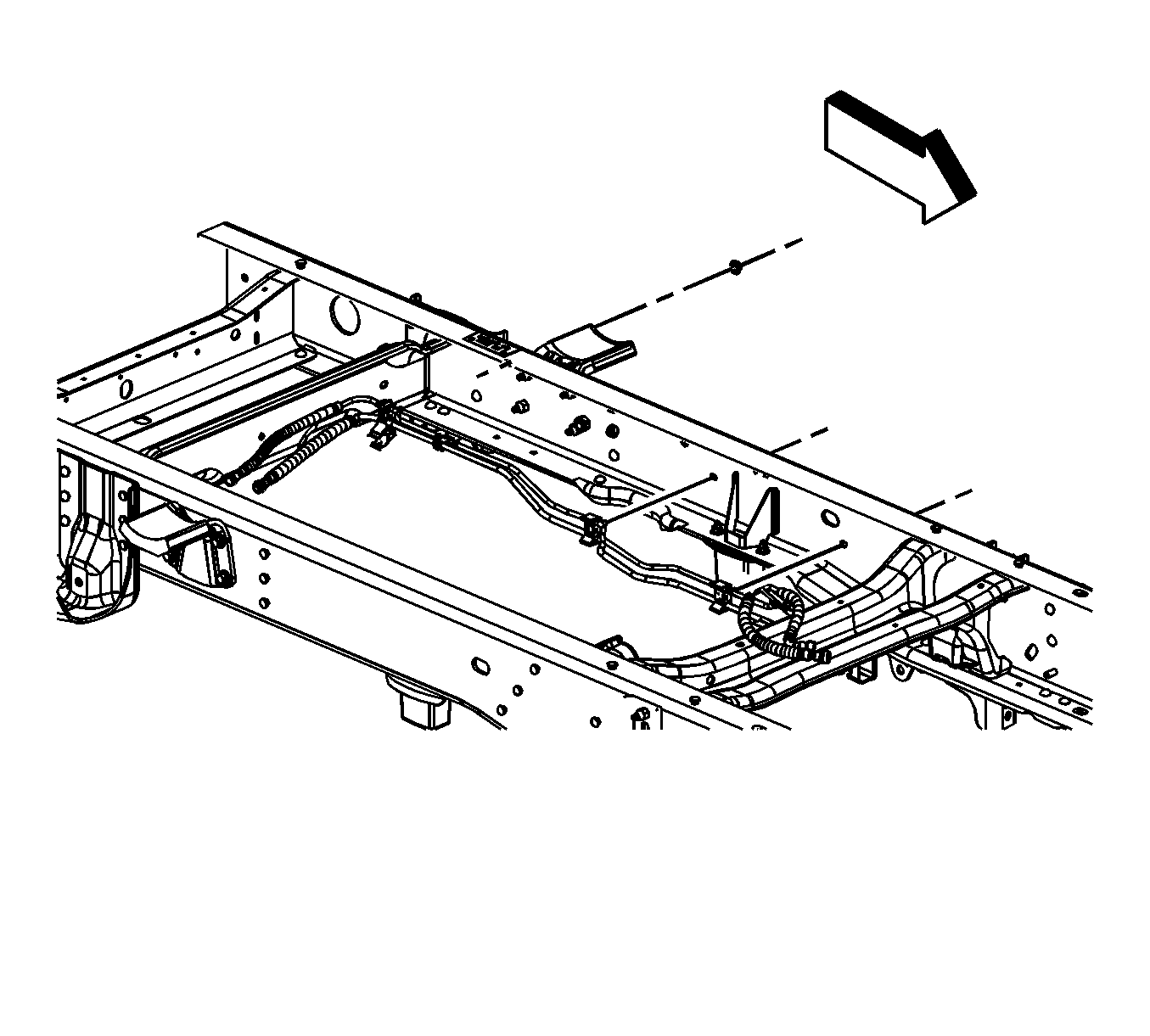
Installation Procedure
- Install the rear fuel line bundle.
- Install the rear fuel line bundle clip nuts.
- Remove the caps from the fuel and balance lines at the fuel tank.
- Connect the fuel feed and pressure balance lines to the rear tank. Refer to Metal Collar Quick Connect Fitting Service .
- Remove the caps from the fuel and balance lines at the fuel tank.
- Connect the fuel feed and pressure balance lines to the front tank. Refer to Metal Collar Quick Connect Fitting Service .
- Install the fuel fill cap.
- Connect the negative battery cable. Refer to Battery Negative Cable Disconnection and Connection .
- Perform the following procedure in order to inspect for leaks.
Notice: Refer to Fastener Notice in the Preface section.

Tighten
Tighten the nuts to 12 N·m (106 lb in).


| 9.1. | Turn the ignition ON, with the engine OFF, for 2 seconds. |
| 9.2. | Turn the ignition OFF for 10 seconds. |
| 9.3. | Turn the ignition ON, with the engine OFF. |
| 9.4. | Inspect for fuel leaks. |
Fuel Hose/Pipes Replacement - Chassis Pickup - 5.3L (L59) Engine
Removal Procedure
Important: Clean all fuel pipe connections and surrounding areas before disconnecting the pipes in order to avoid possible fuel system contamination.
- Relieve the fuel system pressure. Refer to the Fuel Pressure Relief .
- Disconnect the fuel feed and return pipes (1) at the fuel rail. Refer to Metal Collar Quick Connect Fitting Service .
- Disconnect the evaporative emission (EVAP) canister purge tube (3). Refer to Plastic Collar Quick Connect Fitting Service .
- Cap the fuel rail and EVAP pipes.
- Raise and suitably support the vehicle. Refer to Lifting and Jacking the Vehicle in General Information.
- Remove the fuel pipe bracket nut (2).
- Remove the fuel pipe bracket from the bellhousing stud.
- Remove the heated oxygen sensor (HO2S) sensor connector from the bracket.
- Remove the fuel hose/pipe clip from the bracket on the automatic transmission.
- If equipped with 4-wheel drive (4WD), remove the fuel hose/pipe clip from the bracket on the transfer case.
- Remove the clip from the bracket on the frame.
- Remove the transfer case harness from the clip bracket.
- Remove the EVAP canister. Refer to Evaporative Emission Canister Replacement .
- Thoroughly wash all contaminants from around the EHCU.
- Disconnect the chassis electrical harness connectors from the electronic brake control module (EBCM).
- Disconnect the brake lines from the brake pressure modulator valve (BPMV).
- Remove the bolts (4) attaching the EHCU bracket to the frame (5).
- Remove the EHCU (1).
- If equipped with 4WD, remove the torsion bar bracket. Refer to Torsion Bar Replacement in Front Suspension.
- Disconnect the fuel feed and return pipes at the fuel tank. Refer to Plastic Collar Quick Connect Fitting Service .
- Cap the fuel pipes at the fuel tank.
- If vehicle is a regular cab, remove the fuel feed, EVAP, and return pipe assembly nuts.
- If vehicle is a crew or extended cab, remove the fuel feed, EVAP, and return pipe assembly nuts.
- Remove the fuel feed, EVAP, and return pipe assembly.
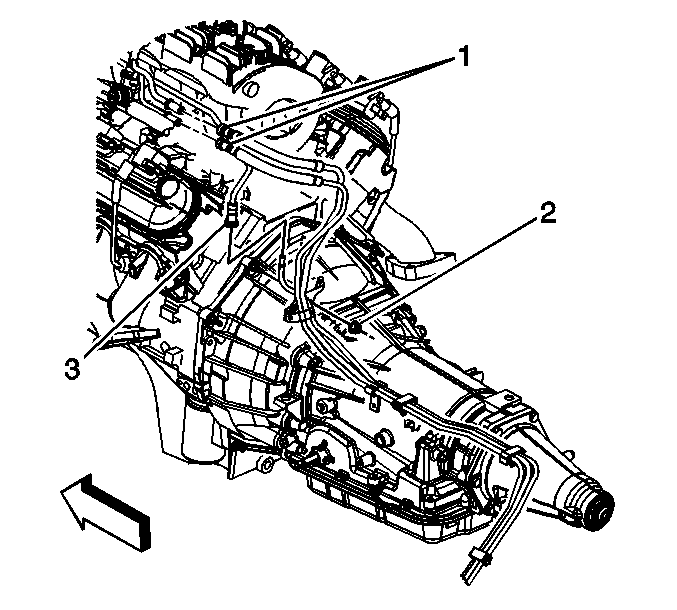


Important: The area around the electro-hydraulic control unit (EHCU) MUST be free from loose dirt to prevent contamination of disassembled anti-lock brake components (ABS) components.

Important: Make sure that brake lines are tagged and kept in order for proper reassembly.
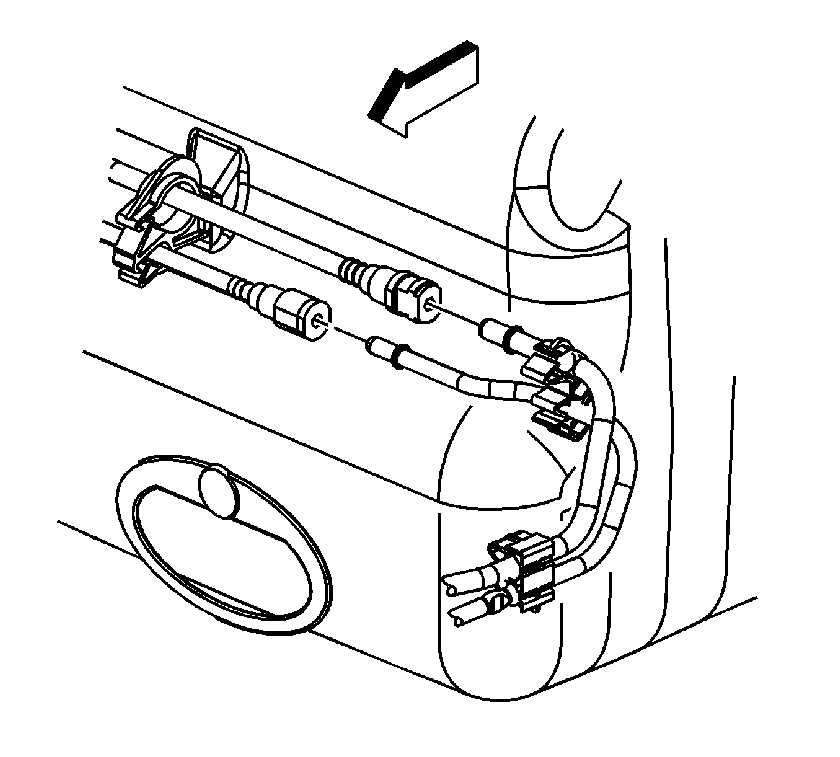
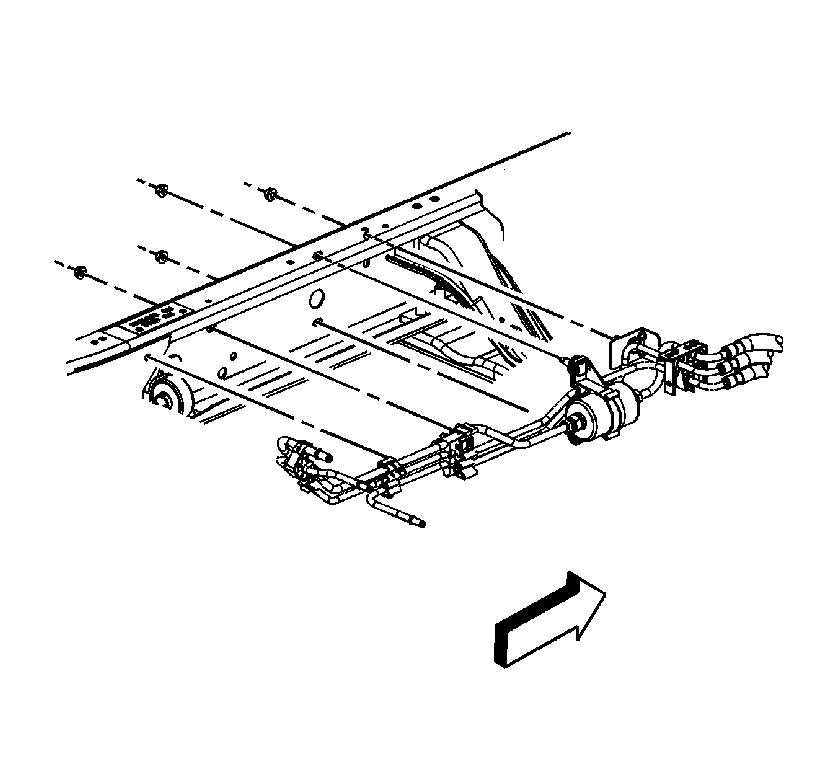
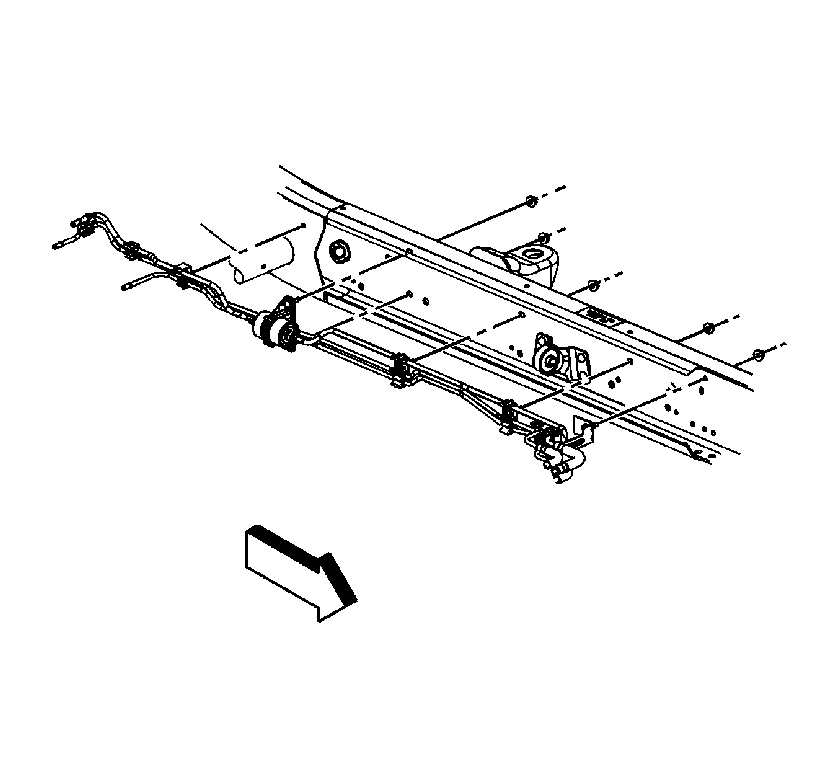
Installation Procedure
- Install the fuel feed, EVAP, and return pipe assembly.
- If vehicle is a crew or extended cab, install the fuel feed, EVAP, and return pipe assembly nuts.
- If vehicle is a regular cab, install the fuel feed, EVAP, and return pipe assembly nuts.
- Remove the caps from the fuel pipes at the fuel tank.
- Connect the fuel feed and return pipes at the fuel tank. Refer to Plastic Collar Quick Connect Fitting Service .
- If equipped with 4WD, install the torsion bar bracket. Refer to Torsion Bar Replacement in Front Suspension.
- Install the EHCU (1).
- Install the bolts (4) attaching the EHCU bracket to the frame (5).
- Connect the brake lines to the BPMV.
- Connect the chassis electrical harness connectors to the EBCM.
- Install the EVAP canister. Refer to Evaporative Emission Canister Replacement .
- Install the transfer case harness to the clip bracket.
- Install the clip to the bracket on the frame.
- If equipped with 4WD, install the fuel hose/pipe clip to the bracket on the transfer case.
- Install the fuel hose/pipe clip to the bracket on the automatic transmission.
- Install the HO2S sensor connector to the bracket.
- Install the fuel pipe bracket to the bellhousing stud.
- Install the fuel pipe bracket nut (2).
- Lower the vehicle.
- Remove the caps from the fuel rail and EVAP pipes.
- Connect the EVAP canister purge tube (3). Refer to Plastic Collar Quick Connect Fitting Service .
- Connect the fuel feed and return pipes (1) at the fuel rail. Refer to Metal Collar Quick Connect Fitting Service .
- Install the fuel fill cap.
- Connect the negative battery cable. Refer to Battery Negative Cable Disconnection and Connection in Engine Electrical.
- Use the following procedure in order to inspect for leaks:
Notice: Refer to Fastener Notice in the Preface section.

Tighten
Tighten the nuts to 12 N·m (106 lb in).

Tighten
Tighten the nuts to 12 N·m (106 lb in).


Tighten
Tighten the bolts to 25 N·m (18 lb ft).

Tighten
Tighten the fittings to 25 N·m (18 lb ft).


Tighten
Tighten the nut to 10 N·m (89 lb in).
| 25.1. | Turn the ignition ON, with the engine OFF, for 2 seconds. |
| 25.2. | Turn the ignition OFF for 10 seconds. |
| 25.3. | Turn the ignition ON, with the engine OFF. |
| 25.4. | Inspect for fuel leaks. |
Fuel Hose/Pipes Replacement - Chassis 1500 Crew Cab
Removal Procedure
Important: Clean the fuel and evaporative emission (EVAP) connections and surrounding areas prior to disconnecting the fittings in order to avoid possible system contamination.
- Relieve the fuel system pressure. Refer to Fuel Pressure Relief .
- Disconnect the fuel feed line (1) fitting at the engine. Refer to Metal Collar Quick Connect Fitting Service .
- Disconnect the EVAP canister purge tube (2) fitting. Refer to Plastic Collar Quick Connect Fitting Service .
- Cap the fuel rail and EVAP lines in order to avoid possible system contamination.
- Raise and support the vehicle. Refer to Lifting and Jacking the Vehicle .
- Remove the fuel pipe bracket nut.
- Remove the fuel pipe bracket from the bellhousing stud.
- Remove the heated oxygen (HO2S) sensor connector from the bracket.
- Remove the fuel line clip from the bracket on the transmission.
- Remove the fuel line clip from the bracket on the transfer case, if equipped with 4 wheel drive (4WD).
- Remove the clip from the bracket on the frame.
- Remove the transfer case harness from the clip bracket.
- Thoroughly wash all contaminants from around the EHCU.
- Disconnect the chassis electrical harness connectors from the electronic brake control module (EBCM).
- Disconnect the brake lines from the brake pressure modulator valve (BPMV).
- Remove the bolts (4) attaching the EHCU bracket to the frame (5).
- Remove the EHCU (1).
- Remove the torsion bar bracket, if equipped with 4WD. Refer to Torsion Bar Replacement .
- Remove the EVAP canister. Refer to Evaporative Emission Canister Replacement .
- Disconnect the fuel line at the tank. Refer to Plastic Collar Quick Connect Fitting Service .
- Cap the fuel and EVAP lines in order to avoid possible system contamination.
- Remove the fuel/EVAP bundle clip nuts.
- Remove the fuel/EVAP bundle.


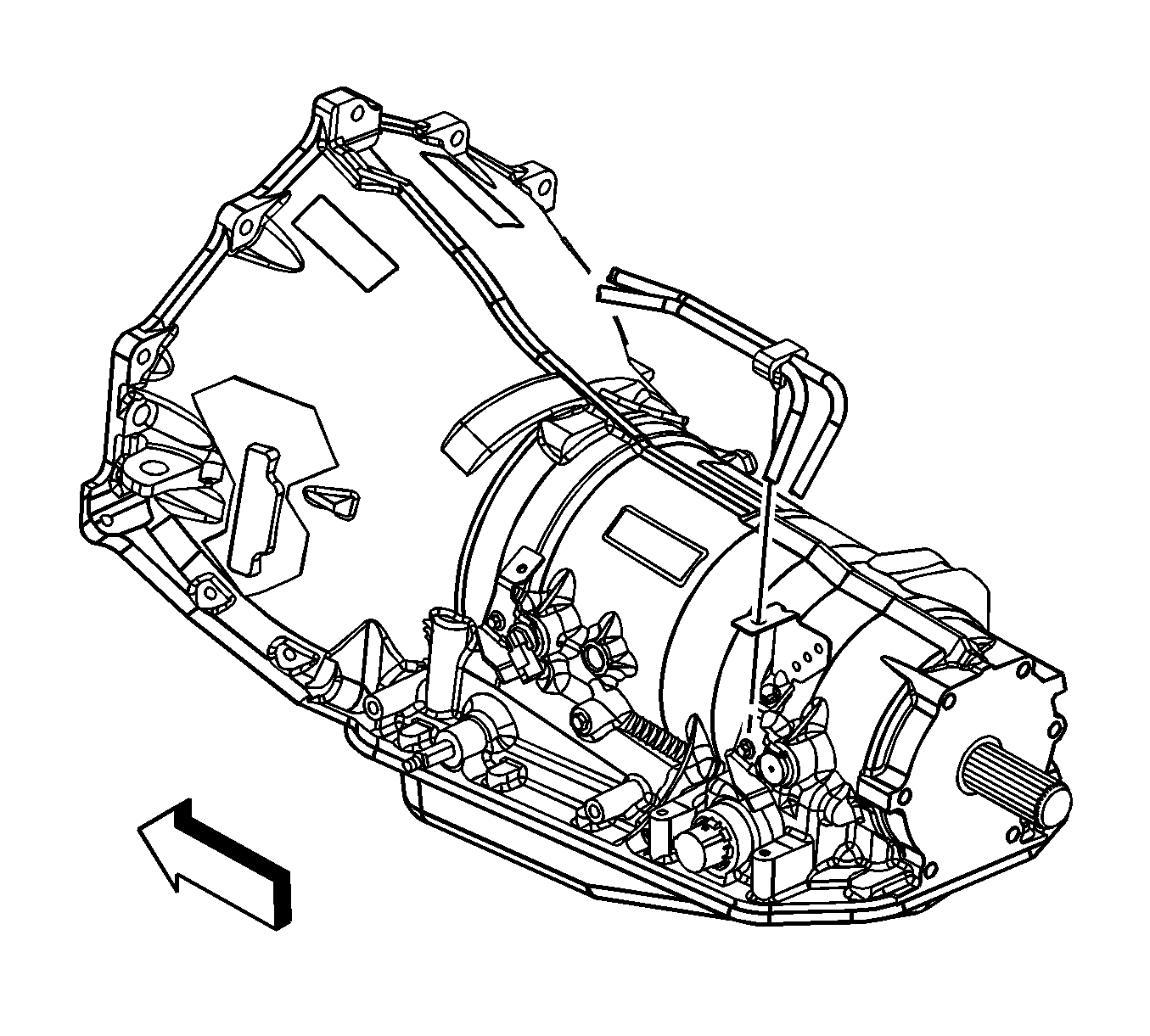

Important: The area around the electro-hydraulic control unit (EHCU) MUST be free from loose dirt to prevent contamination of disassembled anti-lock brake (ABS) components.

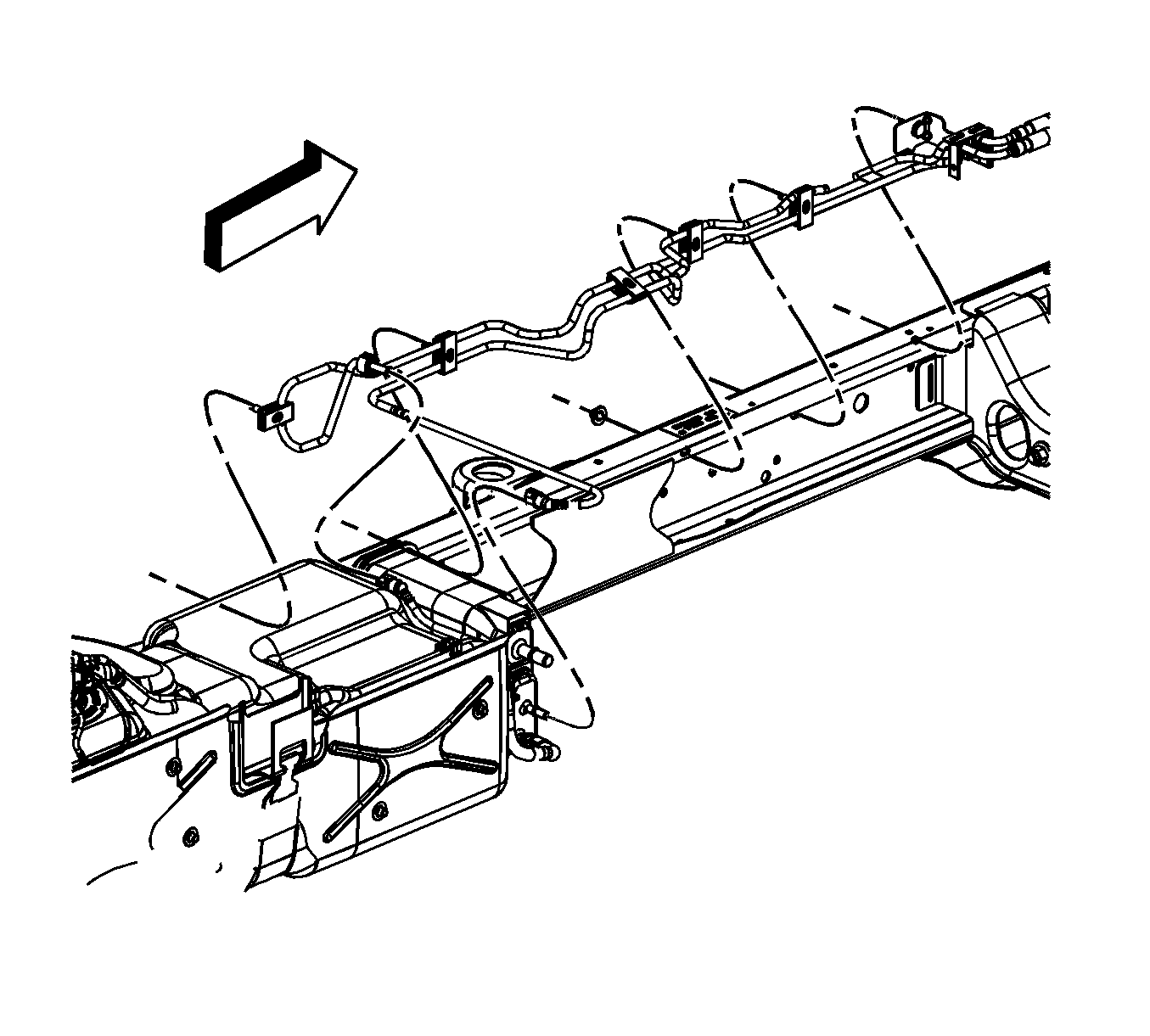
Installation Procedure
- Install the fuel/EVAP bundle.
- Install the fuel/EVAP bundle clip nuts.
- Remove the caps from the fuel and EVAP lines.
- Connect the fuel line at the tank. Refer to Plastic Collar Quick Connect Fitting Service .
- Install the EVAP canister. Refer to Evaporative Emission Canister Replacement .
- Install the torsion bar bracket, if equipped with 4WD. Refer to Torsion Bar Replacement .
- Install the EHCU (1).
- Install the bolts (4) attaching the EHCU bracket to the frame (5).
- Connect the brake lines to the BPMV.
- Connect the chassis electrical harness connectors to the EBCM.
- Install the transfer case harness to the clip bracket.
- Install the clip to the bracket on the frame.
- Install the fuel line clip to the bracket on the transfer case, if equipped with 4WD.
- Install the fuel line clip to the bracket on the transmission.
- Install the HO2S sensor connector to the bracket.
- Install the fuel pipe bracket to the bellhousing stud.
- Install the fuel pipe bracket nut.
- Lower the vehicle.
- Remove the caps from the fuel rail and EVAP lines.
- Connect the EVAP canister purge tube (2) fitting. Refer to Plastic Collar Quick Connect Fitting Service .
- Connect the fuel feed line (1) fitting at the engine. Refer to Metal Collar Quick Connect Fitting Service .
- Install the fuel fill cap.
- Connect the negative battery cable. Refer to Battery Negative Cable Disconnection and Connection .
- Use the following procedure in order to inspect for leaks:
Notice: Refer to Fastener Notice in the Preface section.

Tighten
Tighten the nuts to 12 N·m (106 lb in).

Tighten
Tighten the bolts to 25 N·m (18 lb ft).
Tighten
Tighten the fittings to 25 N·m (18 lb ft).



Tighten
Tighten the nut to 10 N·m (89 lb in).

| 24.1. | Turn the ignition ON, with the engine OFF, for 2 seconds. |
| 24.2. | Turn the ignition OFF for 10 seconds. |
| 24.3. | Turn the ignition ON, with the engine OFF. |
| 24.4. | Inspect for fuel leaks. |
